News
Dime Novel Mormons awarded Best Anthology at JWHA September 24 2018

Congratulations to Michael Austin and Ardis E. Parshall for Dime Novel Mormons winning the Best Anthology Award at the 2018 John Whitmer Historical Association meeting!
To celebrate the award, we are offering all titles from the Mormon Image in Literature series for 30% off from Sep 24 through Sep 28. Use discount code DIMENOVEL at check out to get the discount.*
|
$22.95 |
$15.95 |
$12.95 |
*Offer valid for US domestic customers only. Limited to available inventory. Ends 9/28/18.
Free ebook offer: Dead Wood and Rushing Water: Essays on Mormon Faith, Culture, and Family June 05 2018
FREE EBOOK FOR NEWSLETTER SUBSCRIBERS
Book description:
For over a decade, Boyd Petersen has been an active voice in Mormon studies and thought. In essays that steer a course between apologetics and criticism, striving for the balance of what Eugene England once called the “radical middle,” he explores various aspects of Mormon life and culture—from the Dream Mine near Salem, Utah, to the challenges that Latter-day Saints of the millennial generation face today.
"Petersen should be considered among the preeminent essayists of this moment in Mormon history.” — Mark Brown, BYU Studies Quarterly
STEPS TO DOWNLOAD
**Ebook file must be downloaded onto a laptop or desktop computer. After download, the file can be transferred to your ebook reader, tablet, or smartphone app. If you are already a newsletter subscriber, you should have received an email with this free ebook offer and instructions to download.**
1. Enter your email address in the form below to sign up for our newsletter and receive a welcome email with instructions. If you do not see this email, check your spam, junk mail, or promotions folder.
2. Click the link in the welcome email to go to the book page on our website. Select which ebook format you wish to download (Kindle, Nook/Kobo, Apple). The price will show as $9.99, but will be changed to $0.00 as you complete these steps.
3. Click Add to Cart.
4. Click Checkout.
5. On the Customer Information page, fill out your name and address information. Enter the discount code that you received in your welcome email. The discount code will reduce the price of the book to $0.00.
6. Click Continue to Payment Method. You will not be required to enter payment info.
7. Click Complete Order. You will be emailed a link to download the ebook along with instructions for transfering the ebook file to an ereader device or tablet/smartphone app (check your spam, junk email, or promotions folder in your email inbox if you do not see it).
Note: Once you have downloaded your ebook, it will be on your computer's hard drive, most likely in the "Downloads" folder. For example, if you downloaded the ebook in Kindle format, the file name will be "Dead Wood and Rushing Water_AMAZON.mobi."
Ebook Flash Sale on Mormon titles starts December 12th! December 11 2017

Greg Kofford Books is pleased to announce our second annual EBOOK FLASH SALE on select titles on Tuesday, December 12th and Wednesday, December 13th! Pick up a few titles that have been on your reading list for as low as $2.99!
Click image below to purchase. Offer is valid for Kindle ebooks only.
 |
Future Mormon: Essays in Mormon Theology |
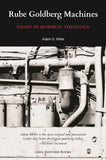 |
Rube Goldberg Machines: Essays in Mormon Theology |
 |
The Mormoness; or The Trials of Mary Maverick: A Narrative of Real Events |
 |
For Zion: A Mormon Theology of Hope |
 |
Who Are the Children of Lehi? DNA and the Book of Mormon |
 |
Fire on the Horizon: A Meditation on the Endowment and Love of Atonement |
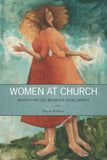 |
Women at Church: Magnifying LDS Women's Local Impact |
 |
Joseph Smith's Polygamy: Toward a Better Understanding |
 |
Knowing Brother Joseph Again: Perceptions and Perspectives |
 |
The End of the World, Plan B: A Guide for the Future |
 |
The Garden of Enid: Adventures of a Weird Mormon Girl, Part One |
 |
Perspectives on Mormon Theology: Apologetics |
Twelve Days of Kofford 2017 November 21 2017
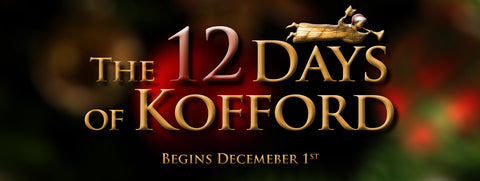
Greg Kofford Books is once again pleased to offer twelve days of discounted holiday shopping from our website!
HERE IS HOW IT WORKS: Every morning from Dec 1th through the 12th, we will be posting a DISCOUNT CODE on our Facebook or Twitter pages. Use this discount code on the corresponding day to receive 30% off select titles. The final day will be an e-book flash sale on Amazon.com.
To help you plan, here are the dates, titles, and sale prices we will be offering beginning Dec 1st. These sales are limited to available inventory. You must follow our Facebook or Twitter pages to get the discount code. Orders over $50 qualify for free shipping. Customers in the Wasatch Front area are welcome to pick orders up directly from our office in Sandy, UT.
Day 1 — Brant Gardner collection
 |
Second Witness, Vol 1: First Nephi $39.95 hardcover |
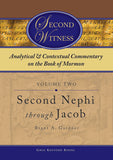 |
Second Witness, Vol 2: Second Nephi through Jacob $39.95 hardcover |
 |
Second Witness, Vol 3: Enos through Mosiah $39.95 hardcover |
 |
Second Witness, Vol 4: Alma $49.95 hardcover |
 |
Second Witness, Vol 5: Helaman through Nephi $39.95 hardcover |
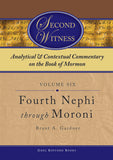 |
Second Witness, Vol 6: Fourth Nephi through Moroni $39.95 hardcover |
 |
The Gift and the Power: Translating the Book of Mormon $34.95 paperback |
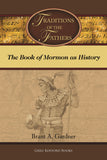 |
Traditions of the Fathers: The Book of Mormon as History $34.95 paperback |
 |
The Garden of Enid: Adventures of a Weird Mormon Girl $22.95 paperback |
 |
The Garden of Enid: Adventures of a Weird Mormon Girl $22.95 paperback |
Day 3 — The Mormon Image in Literature
 |
The Mormoness; Or, The Trials of Mary Maverick: $12.95 paperback |
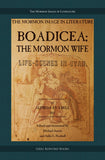 |
Boadicea; the Mormon Wife: Life Scens in Utah $15.95 paperback |
 |
Dime Novel Mormons $22.95 paperback |
 |
Women at Church: Magnifying LDS Women's Local Impact $21.95 paperback |
 |
Mormon Women Have Their Say: Essays from the Claremont Oral History Collection $31.95 paperback |
 |
Voices for Equality: Ordain Women and Resurgent Mormon Feminism $32.95 paperback |
 |
Joseph Smith's Polygamy, Vol 1: History $34.95 paperback |
 |
Joseph Smith's Polygamy, Vol 2: History $34.95 paperback |
 |
Joseph Smith's Polygamy, Vol 3: Theology $25.95 paperback |
 |
Joseph Smith's Polygamy: Toward a Better Understanding $19.95 paperback |
 |
Modern Polygamy and Mormon Fundamentalism: The Generations after the Manifesto $31.95 paperback |
 |
Mormon Polygamous Families: Life in the Principle $24.95 paperback |
 |
Prisoner for Polygamy: The Memoirs and Letters of Rudger Clawson at the Utah Territorial Penitentiary, 1884–87 $29.95 paperback |
 |
Who Are the Children of Lehi? DNA and the Book of Mormon $15.95 paperback |
 |
“Let the Earth Bring Forth”: Evolution and Scripture $15.95 paperback |
 |
Mormonism and Evolution: The Authoritative LDS Statements $15.95 paperback |
 |
Parallels and Convergences: Mormon Thought and Engineering Vision $24.95 paperback |
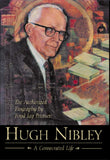 |
Hugh Nibley: A Consecrated Life $32.95 hardcover |
 |
“Swell Suffering”: A Biography of Maurine Whipple $31.95 paperback |
 |
William B. Smith: In the Shadow of a Prophet $39.95 paperback |
 |
LDS Biographical Encyclopedia, 4 Vols $259.95 paperback |
 |
The Man Behind the Discourse: A Biography of King Follett $29.95 paperback |
 |
Liberal Soul: Applying the Gospel of Jesus Christ in Politics $22.95 paperback |
 |
A Different God? Mitt Romney, the Religious Right, and the Mormon Question $24.95 paperback |
 |
Common Ground—Different Opinions: Latter-day Saints and Contemporary Issues $31.95 paperback |
 |
Even Unto Bloodshed: An LDS Perspective on War $29.95 paperback |
 |
War & Peace in Our Time: Mormon Perspectives $29.95 paperback |
 |
The End of the World, Plan B: A Guide for the Future $13.95 paperback |
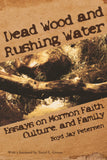 |
Dead Wood and Rushing Water: Essays on Mormon Faith, Culture, and Family $22.95 paperback |
 |
Mr. Mustard Plaster and Other Mormon Essays $20.95 paperback |
 |
Writing Ourselves: Essays on Creativity, Craft, and Mormonism $18.95 paperback |
 |
On the Road with Joseph Smith: An Author's Diary $14.95 paperback |
 |
Hearken O Ye People: The Historical Setting of Joseph Smith's Ohio Revelations $34.95 hardcover |
 |
Fire and Sword: A History of the Latter-day Saints in Northern Missouri, 1836–39 $36.95 hardcover |
 |
A House for the Most High: The Story of the Original Nauvoo Temple $29.95 paperback |
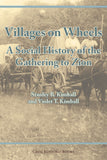 |
Villages on Wheels: A Social History of the Gathering to Zion $24.95 paperback |
 |
Mormonism in Transition: A History of the Latter-day Saints, 1890–1930, 3rd ed. $31.95 paperback |
Day 11 — International Mormonism
 |
Tiki and Temple: The Mormon Mission in New Zealans, 1854–1958 $29.95 paperback |
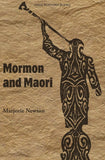 |
Mormon and Maori $24.95 paperback |
 |
The Trek East: Mormonism Meets Japan, 1901–1968 $39.95 paperback |
 |
From Above and Below: The Mormon Embrace of Revolution, 1840–1940 $34.95 paperback |
 |
The History of the Mormons in Argentina $24.95 paperback |
 |
For the Cause of Righteousness: A Global History of Blacks and Mormonism, 1830–2013 $32.95 paperback |
2016 AML Awards two outstanding Greg Kofford Books titles! April 24 2017
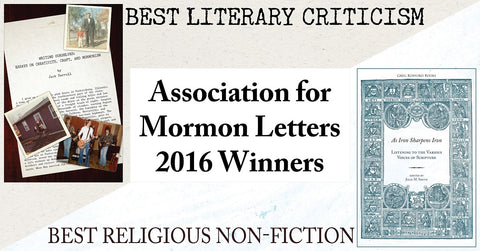
The Association for Mormon Letters held its annual meeting this past weekend, April 22-23, 2017. This year, the event was held at Utah Valley University in Orem, UT. The keynote speaker was Phyllis Barber, author of eight books and winner of the Smith-Pettit Foundation and the Association for Mormon Letters Award for Outstanding Contribution to Mormon Letters. Acclaimed science fiction author Orson Scott Card and renowned poet and short-story author Susan Howe, were also presented with AML Lifetime Achievement Awards.
Among the winners at the AML Awards Ceremony were two Greg Kofford Books titles: As Iron Sharpens Iron: Listening to the Various Voices of Scripture, edited by Julie M. Smith, won the 2016 Best Religious Non-fiction Award. From the citation:
As Iron Sharpens Iron: Listening to the Various Voices of Scripture, edited by Julie M. Smith, won the 2016 Best Religious Non-fiction Award. From the citation:
“As Iron Sharpens Iron provides an excellent study on the challenges found in the Mormon scriptural cannon in a manner that is very intriguing and is sure to challenge Mormon readers to rethink how they approach their scriptural studies and thought.”
 Writing Ourselves: Essays on Creativity, Craft, and Mormonism, by Jack Harrell, won the 2016 Best Literary Criticism Award. From the citation:
Writing Ourselves: Essays on Creativity, Craft, and Mormonism, by Jack Harrell, won the 2016 Best Literary Criticism Award. From the citation:
“A worthy successor to the work of Eugene England. . . . At his most engaging, Harrell speaks bluntly, knowingly, and aspirationally regarding the plight of the serious Mormon writer, and by extension, their audience. His advice to writers to be honest and to embrace their weirdness, among other things, seeks to reframe the discussion of Mormonism’s cultural debits and credits into a workable and motivational mode of authentic creativity.”
Congratulations to Julie M. Smith, Jack Harrell, and all of the other winners of the 2016 AML Awards! We are proud to have such distinguished talented authors on our roster!
For the complete list of 2016 AML Award winners, click here.
For a complete list of Greg Kofford Books award-winning titles, click here.
For a full catalog (pdf) of Greg Kofford Books titles click here.
Q&A with Michael Austin and Ardis E. Parshall for Dime Novel Mormons March 13 2017
Order Your Copy Today
Q: For those who are not familiar with the Mormon Image in Literature series, can you explain its purpose and scope?
Mike: The Mormon Image in Literature series is a collaboration between an archival researcher and a literary critic that seeks to reprint the books that shaped the public perceptions of Mormonism in the nineteenth and early twentieth centuries. We will include books by Mormons and books about Mormons, but will focus on works that are hard to find and virtually unknown in the twenty-first century (as opposed to books like A Study in Scarlet and Riders of the Purple Sage, which have been continuously in print since their first publication). Along with faithful reproductions of the texts that scholars can use as primary research texts, each of these volumes contains an introduction and notes that set the works, and their authors, in a context that relates both to the way Mormons were understood by the author and the way the publishing industry in the United States was changing and demanding different kinds of works.
Ardis: These novels have next to nothing to teach me about Mormon history directly—they're too wildly inaccurate to be data sources. What they do give me is a chance to enter the Mormon past, in a sense. I read the words, knowing that readers of a hundred or more years ago read the same words. This is what people thought of us. If I were a missionary, this is what would be in the minds of people behind the doors I knocked on and in the minds of listeners at street meetings. If I were a Mormon mother sending my boy out as a missionary, this is what he would have to face, this is why I might be afraid for him, this is why I would be proud of him. This is what is behind the sneer on the conductor's face when he takes my ticket; this is what brings a curl to the lip of the government employee I appeal to for assistance. I know how I feel and what I think when I read news accounts today, or watch current TV, with caricatures of my behaviors and beliefs; when I read a sensational novel like those in our series, I know what it meant and felt like to a Mormon of the era to read these. We can dress up like pioneers and we can put on pageants about episodes in Mormon history—but that is superficial playacting. Watching the stories of these novels playing out in my imagination, just as they played out in the imaginations of their original readers, seems to me to be much closer to replicating historical reality.
Q: If you ran a bookstore, what section do you think these books would fit best in?
Ardis: Fiction, or historical fiction. I would keep the series together, rather than breaking it up by genre. (The genre mix will be more and more evident as the series continues.)
Mike: I would put them in the fiction section. Or in the Mormon Studies section if I owned one of the handful of bookstores in the world with a Mormon Studies section. And, like Ardis, I would keep the series together.
Q: Granted that the four titles collected in Dime Novel Mormons are not considered “highbrow” literature, can you give me a passage or scene that stood out to you in illustrating how public perception of Mormons may have been influenced by popular media tropes?
Ardis: When the villain Mercer Aldrich/John Leigh is introduced in Dolores, the Danite's Daughter, he is portrayed as handsome and intelligent and well-mannered and well-dressed—everything a woman might want, seemingly. But, of course, his civilized exterior is a mask hiding what he really is: a Mormon! a Danite! a threat! The fact that he can present himself so attractively only underscores the danger by warning readers that they cannot trust their judgment where a Mormon is concerned. That is a trope repeated in many of these novels, whenever a Mormon agent or missionary is among civilized society in the East or in England—it is only when he is among his own evil kind that the character's true nature shows itself.
A flesh-and-blood Mormon missionary who was kind and articulate had two strikes against him when the people he approached had that stock Mormon villain in mind. The more polite an elder was, the more effort he put into personal cleanliness, the more cheerful he was, the more carefully he presented his gospel message, the more at a disadvantage he could be: Isn't he just like the novels portray Mormons? Why, the nicer he is, the more rotten his heart must be, and the more clever he is at concealing his evil intent! There really isn't much a man can do to dispel the expectations of a public primed to expect the worst exactly when he is on his best behavior. In some cases, novelists who are most familiar with the Mormon message have also worked bits of standard missionary presentations into their stories, so that when an elder taught a bit of doctrine, it must have set off alarm bells in the minds of readers—here is a Mormon who not only acts the way these novels have depicted Mormons, he's actually saying what they warned me he would say! He must be just as bad as they say, too!
Mike: In the beginning of The Bradys Among the Mormons, Old King Brady, the nation's most accomplished private detective, is summoned to Washington, DC, to meet with a senator. Utah has become a state, and a candidate for its congressional seat has proposed to the senator's daughter. The senator will allow the marriage, but only if the Mormon, Joseph Smith Podmore, proves to be single and not secretly practicing polygamy.
This book came out right at the start of the Reed Smoot hearings, so it refers to a major public concern of the time. But it also shows a popular dime novel publisher trying to get as much life as possible out of the Mormon stereotypes that had existed for about thirty-five years in this kind of fiction. Brady will travel to Utah and discover a beautiful and modern Salt Lake City, but beneath that city, in a series of tunnels and caverns accessible only to Mormon elders, things go on just as they always have: polygamy, Danites, blood atonement, and all the rest.
I think that the new generation of dime novels that came out at the turn of the twentieth century created modern frames for the previous century's sensational stereotypes of Mormons, which had a lot to do with the perpetuation of those stereotypes and the assumption of many Americans that nothing really changed after the Manifesto.
Q: Was there anything in this collection of stories that surprised you in its depiction of Mormons, whether positive or negative? Anything that did not follow the standard villain tropes of secrecy, sexual deviancy, and violence?
Mike: In Frank Merriwell Among the Mormons, the author takes care to depict the standard Mormon villain—an aging patriarch trying to force a beautiful young maiden to marry him—as a member of a breakaway group of Mormons who are defying the Church. One of the heroes of the story is a young, monogamous, mainstream Mormon who wants to marry the beautiful young maiden in question. Frank Merriwell points out that the rising generation of Mormons are good citizens who are opposed to polygamy. In 1897, in a dime novel, this amounts to something like high praise.
Ardis: Hmm. This one is harder. Nothing comes to mind as surprising in the depiction of Mormons—the maidens are all fair and helpless; the Mormon villains are uniformly despicable; the Gentile heroes are unfailingly perfect specimens of stalwart American manhood.
One element that I hadn't been aware was so prevalent in these books is that the Mormon landscape is shown to be as malevolent as the Mormon soul. There is that vast underground network of dimly-lit caverns beneath Salt Lake City, all interconnected by natural tunnels, their walls sometimes dripping with lake water, their dead-ends dropping off suddenly into bottomless pits, their acoustics so perfect that our heroes can eavesdrop on secret Danite conversations without their own voices or footsteps betraying their presence to those Danites. The natural twists and turns in those tunnels and caverns somehow magically line up with the geometric regularity of the surface, so that the house of every prominent Mormon, built on Salt Lake's straight streets and right-angled blocks, has easy access to the subterranean world. Even the mountain hideouts have magical qualities. Danites, and eventually our heroes, can pass into and out of valleys by means of caves and secret passages.
I understand that readers of dime novels were probably not familiar with the legitimate writings of naturalists and army surveyors and the great Western explorers who report no trace of such geographic features, but it's still a bit surprising to me that readers of these stories could suspend their disbelief in such weird and abnormal landscapes in order to enter into the story. So, you have no faith in the basic humanity of tens of thousands of Mormons? Okay, but how does that translate into your lack of faith in the integrity of the natural world? That, in some ways, surprises me.
Q: This has already been addressed in passing, but I’d like to make it an explicit focus: How would you address readers who may be concerned that the books collected in this volume are often stigmatized as being “anti-Mormon” literature?
Mike: Oh, there is no question that these are anti-Mormons books—much more so than anything being produced today. But these portrayals are not unrelated to depictions of Mormons in some kinds of contemporary literature—the modern mystery novel, for example, where there are still Danites and blood atonement in some places. It is important for Latter-day Saints to understand the history of how we have been portrayed because that history has had consequences that we are still living with. It is always worth our time to learn the history of ideas and perceptions that are still with us today.
Ardis: They are anti-Mormon books—they falsify Mormon doctrine and character and intent; they shaped and promoted anti-Mormon feeling that extended from the novels into the real world and persists to the present. The question for me is, “Granted that these are anti-Mormon books, is there any good purpose in reprinting them, in reading them?” And I would answer that with a shouted “Yes!”
You won't learn anything about Mormonism here, but you will learn—in a sometimes delightful way, if you can turn off the natural tendency to take offense—quite a bit about the world that Mormons lived in or confronted whenever they looked outside Mormondom. You'll better understand where these warped views come from when you hear them repeated in some form today.
And I wouldn't hesitate to recommend that anybody, young or old, Mormon or not, read these stories, recognizing them for what they are. I agree with something Boyd K. Packer said in 1976 in a fireside address about the arts: “Teachers [readers in this case] would do well to learn the difference between studying some things, as compared to studying about them. There is a great difference.” Readers aren't reading anti-Mormonism in these novels to adopt that view themselves; they're reading about it, to understand and face it.
Q: Can you give us a glimpse as to what is yet in store for the Mormon Image in Literature series?
Mike: The next few volumes will focus on some of the literature produced by Mormons in the nineteenth century. We are working on a critical edition of Orson F. Whitney's Elias, for example, and on the collected works of Josephine Spencer, which have never been published before.
Ardis: I'm especially excited for two books written by Mormon women, which are as different as can be from the dime novels. The first is one or more volumes of the collected short stories of Josephine Spencer who saw well beyond her own time, and the other is the novel Venna Hastings by Julia Farr (the pseudonym of a woman I had been chasing through history before realizing she was a novelist). Both of these present a Mormon image that is positive, generally not preachy, and which Mormons at the turn of the twentieth century could read with interest—and maybe a sigh of relief that for once they could see themselves, not caricatures, on the printed page.
Along with these, you can look forward to mysteries, love stories, comedies, an outrageous depiction of missionaries that sparked a national investigation, high-minded or well-intentioned religious prose—just about every genre imaginable, except perhaps science fiction.
Order Your Copy Today
Q&A with Scott Hales for The Garden of Enid, Part 2 February 02 2017
Pre-Order Your Copy Today
What are some of the themes that pop up in part 2?
As I was writing The Garden of Enid, I was interested in unpacking ideas about faith, history, human connection, and truth. Part two is especially interested in truth—one of the slipperiest words in language and Mormonism. For much of the book, Enid is trying to anchor herself to some kind of monolithic notion of truth. She wants to finds something stable in the universe, but she finds that the closer she thinks she gets to monolithic truth, the less monolithic it appears.
I think her journey encourages readers to reflect on the value of truth and how they want it to function in their own lives.
Cameos played a big role in part 1. Who are some of the cameos that we can expect in part 2?
Joseph Smith continues to make cameos in part two, as do Eliza R. Snow, Evan Stephens, and the Book of Abraham mummy. Enid also talks with people like Jane Austen, Karl Maeser, Doctor Philastus Hurlbut, Charles Anthon, George A. Smith, and Juanita Brooks. The lost 116 pages and Joanna Brooks’ Book of Mormon Girl also make appearances.
Some of my favorite cameos in part two involve fictional or mythological figures from pop culture. Enid talks with Matt and Mandy from The Friend magazine, Big Foot, and Charlie Brown.
The most significant cameo in the book, however, is the late Mormon scholar Eugene England, who dresses like the Angel Moroni and acts like Virgil in Dante’s Divine Comedy. Unlike other cameo characters, who always show up in simple four-panel comics, Eugene takes Enid on a five-page odyssey through space and time, belief and doubt.
How does her relationship with her mother develop in part 2?
The relationship becomes much rockier in part two. Enid looks to her mother’s past for answers about her own identity, but she often goes about it the wrong way. She and her mother have a traumatic falling out, and much of the book is about what happens after their relationship hits the fan. In both books, Enid struggles to see her mother as a real person, which causes her to say and do hurtful things to her mother. In part two, things go from bad to worse, but they also get better in unforeseen ways.
What do you think Enid learns about herself in part 2?
At the end of part one, Enid begins to see herself as someone who is capable of having meaningful relationships with other people. In part two, she learns that cultivating such relationships makes her vulnerable to the raw emotions that define human experience. This make her a much more awkward and vulnerable character than the weird Mormon girl we saw in part one, but it also makes her more endearing and relatable. Her heart gets much bigger in part two.
What are some of the challenges you have felt in writing this story?
Writing Enid’s story rarely felt like a challenge. Perhaps my biggest challenge was never letting my natural reserve get in the way of her audacity. Enid and I share many of the same interests, but we have different temperaments. Maybe that’s why I found her story so easy to write.
Of course, many of the comics touch on controversies within Mormonism, and addressing them with sensitivity was sometimes a challenge. Some satirists like to aggravate wounds, but my satire is meant to sting like antiseptic.
What do you hope readers will take away from Enid’s life?
I hope people will read Enid and decide to stop being sucky to each other. In other words, I hope Enid’s life brings about world peace and better music on the radio.
I also hope people will read Enid and be inspired to tell stories of their own. Mormonism is an inexhaustible landscape for creative people. I hope better writers and artists than me will read Enid and want to draw on their own experiences with Mormonism to tell stories that enrich our understanding of and appreciation for the Mormon landscape.
Will there be a part 3? There has to be a part 3. I mean, there really, really has to be a part 3.
Part three is always a possibility. I have an idea for a comic about Enid’s last summer before she goes to college. The Garden of Enid has always unfolded in real time, however, and I don’t know if I have the time this summer to do that with this story. I’ll probably start drawing it anyway to see where it goes. If I end up showing Enid as a freshman in college, so be it. I’m sure it will be awkward.
But I don’t plan to start a part three until I finish my current serial comic, Chronicles of Wyler, which is a kind of spin-off prequel to The Garden of Enid. Readers of The Garden of Enid: Adventures of a Weird Girl, Part One know Wyler from Enid’s EFY experience. Chronicles of Wyler tells the story, more or less, of how Wyler got to EFY. I’m almost finished with it, but one Wyler comic takes about three times longer to draw than an Enid comic—and I have much less time to devote to it than I had when I was drawing Enid comics all the time.
Chronicles of Wyler is a different reading experience than The Garden of Enid, and has a much smaller fan base, but I think readers who like Enid will like Wyler’s story as well.
Pre-Order Your Copy Today
Preview The Garden of Enid: Adventures of a Weird Mormon Girl, Part Two January 11 2017

The Garden of Enid:
Adventures of a Weird Mormon Girl, Part Two
On the twelfth day of Kofford: $1.99 flash sale on Kindle e-books! December 12 2016

On the twelfth day of Kofford, fill your digital stockings with our HUGE e-book promotion. Today only, each of the following titles are only $1.99 on Kindle! PLUS, to help you prepare for the upcoming D&C year in Gospel Doctrine class, we are offering B. H. Robert's classic six-volume A Comprehensive History of the Church on Kindle for only $3.99!
This flash sale ends at midnight tonight (Dec. 12th)
On the eleventh day of Kofford: 30% off Mormon Image in Literature titles! December 11 2016
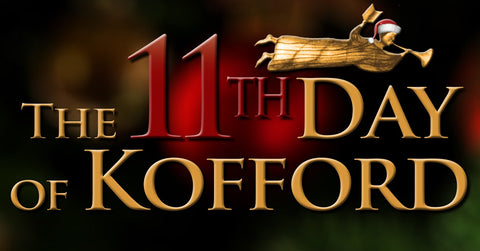
Mormon Image in Literature titles are 30% off December 11th. These special prices are only available for one day, so don't wait!
Orders over $50 qualify for free shipping. Also, local Utah customers can opt to pick up their order directly from our office in Sandy (select this option under the shipping menu).
For more information about the Twelve Days of Kofford holiday sales, click here.
 |
The Mormoness; Or, The Trials Of Mary Maverick: A Narrative Of Real Events Retail: $12.95 |
 |
Boadicea; the Mormon Wife: Life Scenes in Utah Retail: $15.95 |
On the fifth day of Kofford: 30% off Contemporary Studies in Scripture titles! December 05 2016

All Contemporary Studies in Scripture titles are 30% off December 5th. These special prices are only available for one day, so don't wait!
Orders over $50 qualify for free shipping. Also, local Utah customers can opt to pick up their order directly from our office in Sandy (select this option under the shipping menu).
For more information about the Twelve Days of Kofford holiday sales, click here.
 |
Authoring the Old Testament, Volume 1: Geneses—Deuteronomy Retail: $26.95 |
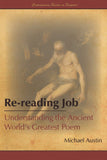 |
Re-reading Job: Understanding the World's Greatest Poem Retail: $20.95 |
 |
Search, Ponder, and Pray: A Guide to the Gospels Retail: $27.95 |
 |
Beholding the Tree of Life: A Rabbinic Approach to the Book of Mormon Retail: $21.95 |
 |
The Vision of All: Twenty-five Lectures on Isaiah in Nephi's Record Retail: $25.95 |
On the third day of Kofford: 30% off personal essay titles! December 03 2016

All personal essay titles are 30% off on December 3rd. These special prices are only available for one day, so don't wait!
Orders over $50 qualify for free shipping. Also, local Utah customers can opt to pick up their order directly from our office in Sandy (select this option under the shipping menu).
For more information about the Twelve Days of Kofford holiday sales, click here.
 |
Dead Wood and Rushing Water: Essays on Mormon Faith, Culture, and Family Retail: $22.95 |
 |
Mr. Mustard Plaster and Other Mormon Essays Retail: $20.95 |
 |
Writing Ourselves: Essays on Creativity, Craft, and Mormonism Retail: $18.95 |
Twelve Days of Kofford Christmas Sale 2016 November 30 2016

MERRY CHRISTMAS FROM GREG KOFFORD BOOKS
Greg Kofford Books is pleased to announce our annual holiday sale on select popular titles beginning December 1st – December 12th.
Here's how it works: at the stroke of midnight each day, a new blog post will go live on our website listing that day's special offerings along with a discount code that you can enter at check-out to get the holiday price. It's that simple. We will also be posting the daily offering and discount code on our Facebook page at 7am.
*Orders over $50 qualify for free shipping (continental U.S. customers only). Local Utah customers can stop by our office in Sandy to pick up their orders as well. Holiday inventory on some titles may be limited, so be sure to take advantage of the daily sale early.*
To help you plan in advance, here are our scheduled sales:
Day 1 — Brant Gardner titles
 |
Second Witness: Analytical & Contextual Commentary on the Book of Mormon series
|
 |
The Gift and Power: Translating the Book of Mormon |
 |
Traditions of the Fathers: The Book of Mormon as History Best Religious Non-fiction Award, Association for Mormon Letters |
Day 2 — Adam Miller titles (essays in Mormon theology)
 |
Rube Goldberg Machines: Essays in Mormon Theology Retail $18.95 |
 |
Future Mormon: Essays in Mormon Theology Retail: $18.95 |
Day 3 — Personal Essays
 |
Dead Wood and Rushing Water: Essays on Mormon Faith, Culture, and Family Retail: $22.95 |
 |
Mr. Mustard Plaster and Other Mormon Essays by Mary Lithgoe Bradford Retail: $20.95 Sale price: $14.67 |
 |
Writing Ourselves: Essays on Creativity, Craft, and Mormonism Retail: $18.95 |
Day 4 — Blake T. Ostler titles
 |
Exploring Mormon Thought series by Blake T. Ostler 30% off each title |
 |
Fire on the Horizon: A Meditation on the Endowment and Love of Atonement Retail: $17.95 |
Day 5 — Contemporary Studies in Scripture
 |
Authoring the Old Testament: Genesis — Deuteronomy Retail: $26.95 |
 |
Re-reading Job: Understanding the Ancient World's Greatest Poem Retail: $20.95 |
 |
Search, Ponder, and Pray: A Guide to the Gospels Retail: $27.95 |
 |
Beholding the Tree of Life: A Rabbinic Approach to the Book of Mormon Retail: $21.95 |
 |
The Vision of All: Twenty-five Lectures on Isaiah in Nephi's Record Retail: $25.95 |
Day 6 — International Mormonism
 |
The Trek East: Mormonism Meets Japan, 1901–1968 Retail: $39.95 |
 |
Mormon and Maori Retail: $24.95 Best International Book Award, Mormon History Association |
 |
Tiki and Temple: The Mormon Mission in New Zealand, 1854–1958 Retail: $29.95 Best International Book Award, Mormon History Association |
 |
For the Cause of Righteousness: A Global History of Blacks and Mormonism, 1830–2013 Retail: $32.95 Best Book Award, Mormon History Association |
 |
The History of the Mormons in Argentina Retail: $24.95 |
 |
From Above and Below: The Mormon Embrace of Revolution, 1840 – 1940 Retail: $34.95 Best International Book Award, Mormon History Association |
Day 7 — Polygamy titles
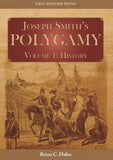 |
Joseph Smith's Polygamy: History and Theology Now in paperback! 30% off each title |
 |
Joseph Smith's Polygamy: Toward a Better Understanding Retail: $19.95 |
 |
Modern Polygamy and Mormon Fundamentalism: The Generations after the Manifesto Retail: $31.95 Best Book Award, John Whitmer Historical Association |
 |
Mormon Polygamous Families: Life in the Principle Retail: $24.95 |
 |
Prisoner for Polygamy: The Memoirs and Letters of Rudger Clawson at the Utah Territorial Penitentiary, 1884–87 Retail: $29.95 |
Day 8 — Contemporary Issues
 |
Women at Church: Magnifying LDS Women's Local Impact Retail: $21.95 |
 |
Common Ground—Different Opinions: Latter-day Saints and Contemporary Issues Retail: $31.95 |
 |
The Liberal Soul: Applying the Gospel of Jesus Christ in Politics Retail: $22.95 |
 |
Voices for Equality: Ordain Women and Resurgent Mormon Feminism Retail: $32.95 |
Day 9 — Biography
 |
Hugh Nibley: A Consecrated Life Retail: $32.95 Best Biography Award, Mormon History Association |
 |
“Swell Suffering”: A Biography of Maurine Whipple Retail: $31.95 Best Biography Award, Mormon History Association |
 |
William B. Smith: In the Shadow of a Prophet Retail: $39.95 Best Biography Award, John Whitmer Historical Association |
 |
The Man Behind the Discourse: A Biography of King Follett Retail: $29.95 |
Day 10 — War and Peace
 |
War & Peace in Our Time: Mormon Perspectives Retail: $29.95 |
 |
Even unto Bloodshed: An LDS Perspective on War Retail: $29.95 |
 |
The End of the World, Plan B: A Guide for the Future Retail: $13.95 |
 |
Saints of Valor: Mormon Medal of Honor Recipients, Updated 2nd Edition Retail: $31.95 |
Day 11 — Mormon Image in Literature
 |
The Mormoness; Or, The Trials Of Mary Maverick: A Narrative Of Real Events Retail: $12.95 |
 |
Boadicea; the Mormon Wife: Life Scenes in Utah Retail: $15.95 |
Day 12 — Ebook Flash Sale — $1.99 for select titles
To be announced. Stay tuned!
New from The Mormon Image in Literature Series: Boadicea — now available! July 14 2016

NOW AVAILABLE from The Mormon Image in Literature series:
Boadicia; The Mormon Wife: Life-Scenes in Utah
by Alfreda Eva Bell
Edited and annottated by Michael Austin and Ardis E. Parshall
About the series:
The Mormon Image in Literature reprints important literary works by and about Mormons—from the sensational anti-polygamy books and dime novels of the Civil War era to the first attempts of Mormon writers to craft a regional literature in their Great Basin kingdom. Each volume contains a critical introduction, helpful annotations, and multiple appendices that enlighten and enliven the text. These volumes have been designed for both Mormon and non-Mormon readers who want to understand the cultural importance of Mormonism during the first Latter-day Saint century.
From series co-editer, Michael Austin:
“Much of this work will be just as interesting to historians as to scholars of literature. In fact, some of the work with the least literary merit has the greatest historical interest. Boadicea: The Mormon Wife, which will be the second volume in the series, will probably never be accused of literary greatness. But it has been written about by some of the top figures in Mormon History: Leonard Arrington, Terryl Givens, Sarah Barringer Gordon, Paul W. Reeve.
The literature of the 19th century had very little subtlety when it came to portraying Mormons. The overwhelming majority of volumes featured Mormon elders living in harems and forming Danite bands to hunt down and kill dissenters. And this was not just in the tawdry literature. Both Robert Louis Stevenson and Arthur Conan Doyle wrote novels that portrayed Mormons in these ways.”
Read the complete Q&A here.

Boadicea; the Mormon Wife: Life-Scenes in Utah
Part of The Mormon Image in Literature series
by Alfreda Eva Bell
Edited by Michael Austin and Ardis E. Parshall
151 Pages
ISBN 978-1-58958-566-9
$15.95 (paperback)
Also available in ebook
First published in 1855, Boadicea; the Mormon Wife belongs to a sub-genre of crime fiction that flourished in the Eastern United States during the 1850s. Boadicea has become increasingly important to scholars of Mormonism because it gives us a glimpse of the Mormon image in literature immediately after the Church’s public acknowledgement of plural marriage. Over the next half century, this image would be sharpened and refined by writers with different rhetorical goals: to end polygamy, to attack Mormon theology, or just to tell a highly entertaining adventure story. In Boadicea, though, we see these tropes in their infancy, through a prolific author working at break-neck speed to imagine the lives of a strange people for readers willing to pay the “extremely low price of 15 cents” for the privilege of being amazed by stories of polygyny and polyandry, along with generous helpings of adultery, seduction, kidnapping, and no fewer than fourteen untimely but spectacular deaths: people are shot, stabbed, bludgeoned, poisoned, hanged, strangled, and drowned. No other novel of the nineteenth century comes anywhere near Boadicea in portraying Mormon society as violent, chaotic, and dysfunctional.
Preview Boadicea
About the series editors:
Michael Austin is the author or editor of seven books and more than 50 articles, book chapters, and reviews, including Re-reading Job: Understanding the Ancient World’s Greatest Poem. He is currently the Provost and Vice President of Academic Affairs at Newman University in Wichita, Kansas.
Ardis E. Parshall is a historian, freelance researcher specializing in Mormon history, and author. She co-edited with Paul Reeve Mormonism: A Historical Encyclopedia and is currently writing She Shall Be an Ensign, a history of the LDS Church told through the lives of Mormon women. She blogs at Keepapitchinin.
Q&A with Jack Harrell, author of Writing Ourselves: Essays on Creativity, Craft, and Mormonism May 30 2016
Pre-order your copy today.
Can you name a few writers who have had the greatest influence on you? What draws you to their work?
My favorite writer is Flannery O’Connor. Her fiction is fantastic, and her essays and letters on writing are full of insight and humor. Back in 1994, at Illinois State University, I did my master’s thesis on her novel Wise Blood. Her work speaks to a lot of Mormons because she’s unapologetic about her Catholic faith. Though her writings are obviously religious, she doesn’t slip into oversimplification or didacticism. And plenty of readers who aren’t religious find satisfaction and meaning in her work. Her writing works on a number of levels. I also appreciate writers like Wallace Stegner, Raymond Carver, and Willa Cather.
Among Mormon writers, Levi Peterson is very important, I think—a must-read. And I think any Mormon interested in good writing should read Virginia Sorensen’s 1963 story collection Where Nothing is Long Ago: Memories of a Mormon Childhood.
I’m drawn to small-town characters and settings in the contemporary West and the Midwest, probably because that’s the world I know best. That’s what I’m interested in writing about, too—telling the stories of ordinary folks in these small towns.
Lately I’ve been reading contemporary philosophers amenable to a religious viewpoint. John Polkinghorne is one I like. He’s an Anglican priest and theologian with two PhDs in physics. I’ve also learned a great deal from the writings of Roger Scruton, especially from his books The Face of God, The Soul of the World, and Beauty.
The last book I read was a Greg Kofford publication: Future Mormon, by Adam S. Miller. It’s great to see a tradition of thoughtful scholarship continue among Latter-day Saints like Miller.
Some label the religious seeker as being on a quest for an epiphany. Can you discuss how epiphany in a spiritual sense is related to epiphany in a creative sense?
Long before James Joyce made it a literary term, the word “epiphany” was a religious term referring to some profound insight from the divine. I believe most religious people, no matter what their faith, seek communion with the divine, or just a connection with something beyond themselves. I think very few people would see the human race as the greatest force or power in the universe; and even if they do, they’d still admit those times when we reach for something greater within us. Isn’t this the quest of most art? To reach for something higher?
Of course, there are a few who would say, “There’s nothing great within us, nothing great beyond us. Therefore, art should express that. Art should be against epiphanies, against transcendence. Art should be being emphatically ugly because ugliness and entropy is all we have.” But that’s a pretty rare position to take, and pretty cynical too.
It seems to me that the very act of creation is rooted in a desire to make something outside of ourselves that expresses what we see or feel within. Maybe every artist is just trying to meet himself or herself, trying to understand and recognize what’s there.
In the sixth chapter, you discuss teaching students to write. You mention the Mormon “struggle to tell the truth.” Why do Mormons struggle with superficiality in their writing?
It’s not just a Mormon struggle. It’s human nature to fall back on easy answers and struggle to tell the truth. We’re all guilty of horizontal thinking: worrying about what the person next door thinks rather than doing what we know to be true. Honesty with ourselves is a normal human struggle too. We all create fictions to justify the way we live and the way we see the world. Some of the lies we tell emerge from our good intentions. We just don’t want to hurt someone’s feelings.
It’s the same with Mormons. We don’t want to hurt people, we’re worried about what our neighbors think, and we want to keep things pleasant. But life isn’t always pleasant. Conflict is at the heart of meaningful stories. If we avoid conflict, we hamstring good stories. The scriptures are full of conflicts. Church history isn’t the simple story that some once thought it to be. There are all kinds of complex layers at work in the scriptures and in Church history and in all our lives.
I think, more and more, we’re going to see that easy answers don’t cut it. We need to face complexities, not avoid them. As the teachings of the Church grow more at odds with secular society, we’re going to have to embrace the complexities of our own position in order to survive. This involves telling the truth.
One of the central messages of Mormonism is that at the potential for redemption is at the center of our existence. The need for redemption assumes that some kind of fall or loss came first. That’s a level of complexity right there—much more than simply saying “the universe is essentially good.” Fall and redemption transcend superficiality every time.
Can you give your take on what makes literature virtuous or praiseworthy?
Yes, I talk about this in an essay on the 13th Article of Faith and how it can be a standard for judging literature.
The root of the word “virtue,” means “manliness,” or, as we’d put it today, “strength.” Implied in that word are concepts like “integrity,” “vigor,” and “power.” In Mormon culture the word “virtue” has become nearly synonymous with “chastity.” Chastity is one aspect of virtue, but the meaning of that word is much broader. I’d say a virtuous book is one that’s powerful, meaningful, and truthful.
“Praiseworthy,” simply means worthy of praise. In that sense, literature that gets good reviews from those who really know what they’re talking about can be called praiseworthy. A reader has to think critically about the praise that comes from someone who simply wants to boost sales, regardless of the quality of the work. The 13th Article of Faith provides a great standard for measuring all these things.
You state that Mormon fiction tends to be “essentially positive in its outlook,” can you summarize why and how that might be a stumbling block towards greater authenticity?
Philosophically, I don’t think an essentially positive outlook is a stumbling block to authenticity. I’d say the same is true in a Mormon theological context as well. In the Mormon view of existence, there is always the potential for a positive outlook, and a positive outcome, because of the atonement. The catch comes when moral agency is introduced. Every child of God can potentially be saved and exalted, but not everyone will, because of agency, because of the way we each can use or misuse our agency.
Maybe it’s this business of agency that introduces a stumbling block to authenticity. When a writer forces a tidy resolution on a character or story, that’s a violation of the “agency,” if you will, of the characters in the story. Another stumbling block arises when a writer approaches the subject matter with a kind of oversimplified “all is well” outlook.
I think the Mormon writer who really understands the depths of Mormonism itself will take a more complex view on writing and of the world. That’s one of the recurring arguments I make in the book, that if we really understand a live our faith, we’ll solve a lot of the problems that lead to bad art.
Mormon writers seem to do well in science fiction and fantasy genres, but struggle in general fiction. Why do you think that is; and in what ways can Mormonism can add a unique voice to general fiction?
I think one factor has to do with language and content. Often a person can write (or read) a science fiction or fantasy novel without dealing with the challenges of vulgar language and sexual scenes. Certainly this isn’t true of all sci-fi/fantasy. But it’s easier to choose authors who don’t go there.
In the mainstream literary genre, sex and language have become pretty common. There’s a reason for this. In the twentieth century, literary fiction grew more transparent about representing the daily lives of ordinary people. People have sex, people swear, and contemporary fictions doesn’t shy away from that. I’m not saying this is a good thing. It’s just the way it is.
I do think that contemporary culture is more vulgar, more irreverent, less sensitive. The Greek root of the word “aesthetic” means “sensitive.” Contrast that word with the word “anesthetic,” which means “the loss of feeling.” Contemporary culture may want to boast that everything is “out there,” that nothing is taboo. And certainly there’s virtue in openness. But we have to be careful. People who go too far into irreverence and subversion might find that they lose something in the bargain.
The language and content factor may not be the reason Mormon writers shy away from general, literary fiction. That’s just a supposition on my part because I really don’t know the answer. I just know that I care more about the problems of a school bus driver living in Rigby, Idaho, than I care about the war between the Ledmendons and the Allickakakials on Zarnack 5.*
Honestly, I think general, literary fiction invites a more thoughtful and measured tone. No one listens to NPR because they want caustic, sensational commentary. Recently l read a great literary novel by Marilynne Robinson, a novel about a Midwestern pastor’s last words to his young son, whom he fathered late in life. The novel is very real about the lives it depicts, but there’s nothing there that would scandalize your grandmother. I’d love to see more novels by Mormons about real Mormons with the meaningful problems that I see every day in my own life and in the lives of those around me. The stories are there, waiting to be told.
And this may not be about writers at all. It may be a reflection of the readers. Could it be that Mormon writers gravitate toward speculative fiction primarily because that’s what sells?
It’s hard to fault writers who want to sell books and are willing to do what it takes to make that happen.
* Editorial note: Greg Kofford Books wishes to apologize to any residents of Zarnack 5 who may find offense in the author's disregard for the ongoing struggles between the Ledmendons and Allickakakials.











